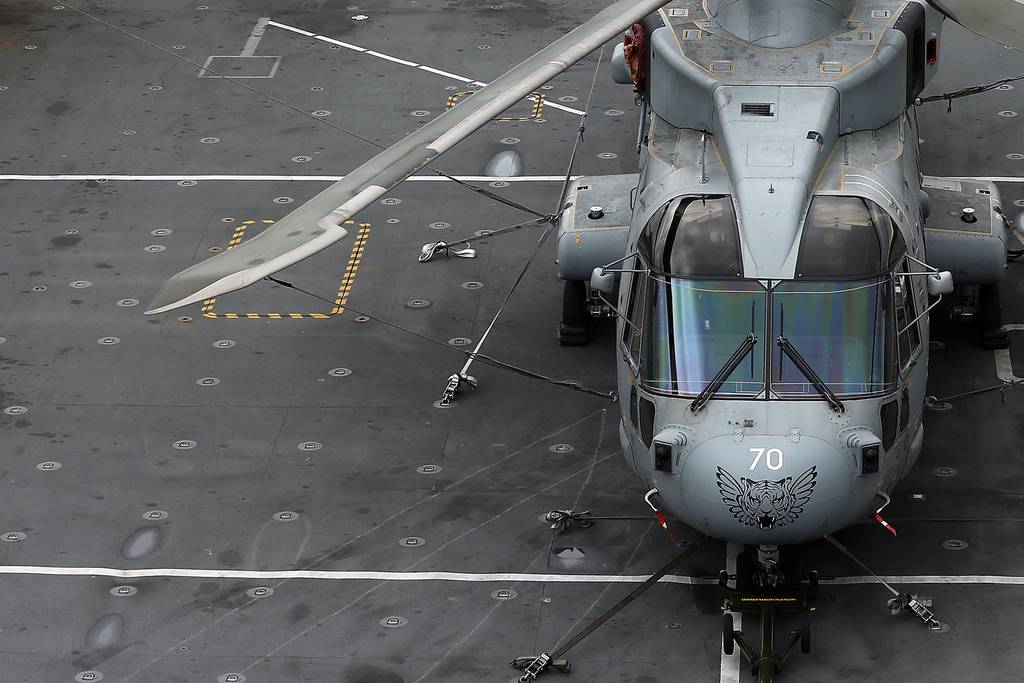LONDON — The British Defence Ministry has revealed details about two artificial intelligence developments ahead of a global summit aimed at managing risks posed by the technology.
The two-day summit, which begins Nov. 1 at the World War II code breaking center at Bletchley Park, is expected to host U.K. Prime Minister Rishi Sunak, U.S. Vice President Kamala Harris, European Commission President Ursula von der Leyen and U.N. Secretary-General Antonio Guterres, as well as tech industry leaders.
Scenarios at sea
The Defence Ministry said Oct. 31 that a beach-landing exercise was held in the English Channel off the coast of Hampshire. The ministry’s Defence Science and Technology Laboratory, supported by the Royal Navy and Army, led the five-day exercise in September.
It involved about 130 personnel, 13 vessels, multiple UAVs, a light aircraft, and more than 50 cameras and sensors deployed to gather data that future defense-related AI capabilities could use.
Several U.S. government organizations also participated, including the Air Force Research Laboratory’s Munitions Directorate; the Department of Energy’s Pacific Northwest National Laboratory; and the Opto-Knowledge Systems-supported Armaments Center of the Army’s Combat Capabilities Development Command.
Industry participants included British firms BAE Systems and Chess Dynamics; Italian company Leonardo; American business Lockheed Martin; and French contractor Thales.
The beach landing saw personnel boarding and leaving vehicles in different ways to generate data representative of varying behavioral traits. In one scenario, synchronized landings saw participants act as a military unit, while another involved participants exiting boats in a deliberately chaotic way to provide a wider data sample of human movement, the MoD said in a statement.
“Innovative, data-driven exercises like this demonstrate how AI can enhance our military capabilities, enabling us to respond more efficiently to the threats of today and tomorrow,” according to Minister for Defence Procurement James Cartlidge.
Data captured during the exercise included visual, infrared, sonar and radar information, as well as metadata such as platform and sensor locations, weather, and sea states. That data will now help train AI algorithms to recognize objects, such as other vessels, the ministry explained.
Helicopter maintenance
The MoD also gave an update on the introduction of a new helicopter support software tool that uses AI to improve maintenance and availability.
The software program, known as Motherlode, is capable of analyzing historical data tailored to environmental and aircraft-specific conditions to more accurately predict equipment failures.
Previously lengthy problem-solving tasks now take just seconds, the MoD said in a statement. The full capability will be rolled out by the end of the year across all Royal Navy helicopters, including the Wildcat and Merlin fleets.
“This is just the beginning of the AI journey for the Fleet Air Arm. There are multiple use cases being explored, leveraging AI to enhance our data exploitation capabilities to maximise aircraft availability for frontline operations,” Cmdr. Nicholas Almond, who leads the 1710 Naval Air Squadron of the Royal Navy’s Fleet Air Arm, said in the statement.
The MoD said it is now exploring the AI technology’s potential use on other defense equipment, such as the Foxhound armored patrol vehicle.
Andrew Chuter is the United Kingdom correspondent for Defense News.








